Implementing the NeoFlow bonnet in clinical practice
Senior Sister Rachel Oakes & Sister Hannah Mangan from Leeds Teaching Hospitals NHS Trust discuss implementing the NeoFlow bonnet in clinical practice.
Senior Sister Rachel Oakes(ANDS Child branch, PG Certificate in Neonatal Care), Senior Sister, Leeds Teaching Hospitals NHS Trust
Sister Hannah Mangan
(RGN, B.Sc. Hons., PG Certificate in Neonatal Care), Neonatal Clinical Educator, Leeds Teaching Hospitals NHS Trust
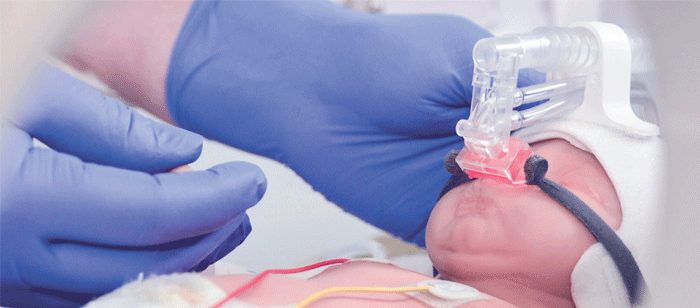
How long have you been using the NeoFlow Bonnet System?
Sr Mangan:
We have had the new bonnet system for the last 6 months. nCPAP is not always the option for some of our patients, but we have utilised the bonnets when appropriate.
Sr Oakes:
On one of our sites we have been using the bonnets for several months now and it could be used every week due to the complexity of the patients we nurse. In the past 3 months we have started using it on the other site.
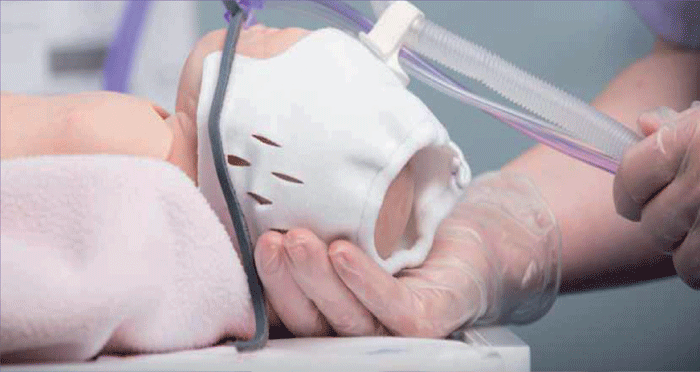
Why did the unit choose the NeoFlow Bonnet System?
Sr Oakes:
We met with Armstrong Medical who demonstrated the benefits of the new bonnets, we liked what we saw so decided to trial. After the initial trial period we saw the benefits of using the bonnets on one of the units in the trust so, therefore, decided to start using them on the second unit as well.
Sr Mangan:
We wanted to trial the new bonnets, masks and prongs to see if this improved patient care, by ensuring skin integrity was maintained and ease the transition of stepping down respiratory support.
What concerns and challenges did you have when starting?
Sr Mangan:
The initial concern was the securement of the bonnet, masks and prongs as it was different to our previous equipment. Staff were used to what they always had done and often reverted to that without trialling the new equipment. As they didn’t necessarily have a concern, they did not see the benefits of trialling new products. However, through training from the reps there have been some key benefits, such as a better patient and family experience from having a hole at the crown of the baby’s head for families to hold and see their baby’s head. The new bonnet also caters for premature infants considering their vulnerable skin and increasingly small sizes.
Sr Oakes:
An initial concern was that when you put the bonnets together these did not seem very secure and nurses were worried they would come apart without staff realising and also that the support cradle may be quite heavy, especially on some of the smaller babies’ heads and that the tubing may pull away from the bonnet with this. Training all the staff on the correct way to use the bonnets has been a big challenge as we have a large number of staff and also it was so different to the previous hats that we used.
There was some resentment from staff learning about a new product, however, these have all been worked out and everyone now sees the benefits of the new bonnets. Staff visiting the ward such as radiographers, have been very impressed as it makes their job a lot easier now there is the hole at the top which allows them access to carry out scans.
How does the NeoFlow bonnet compare to traditional nCPAP hats?
Sr Mangan:
There are a few key benefits to the bonnet.
- There is a hole in the top of the bonnet for families to hold their baby’s head and see their baby’s head, which improves families’ experience on the ward.
- The hole in the bonnet allows babies to have important head scans carried out.
- The Velcro® system to attach the prongs/mask and generator to the bonnet is better for the patient’s skin integrity as it does not need to be pulled and stretched onto the face.
- The measuring of both the bonnet and prongs/mask is easy for staff to use.
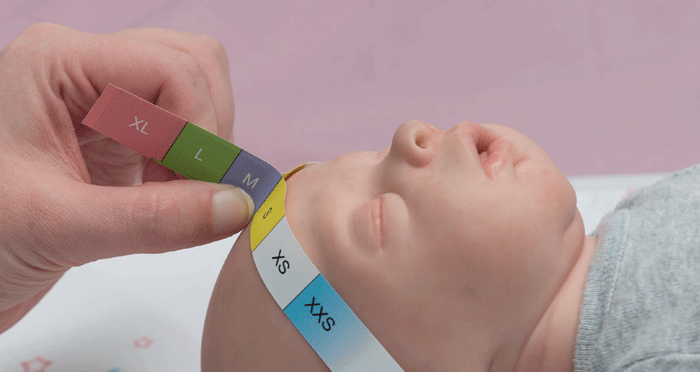
Sr Oakes:
- The hole allows not only parents to access their baby’s head for positive touch but also for babies to have procedures done such as cranial ultrasound scans without having to disturb the nasal seal or the bonnet.
- We no longer have to “pull” the bonnets prior to using them now as the new bonnets with the Velcro® fastenings can go to any size.
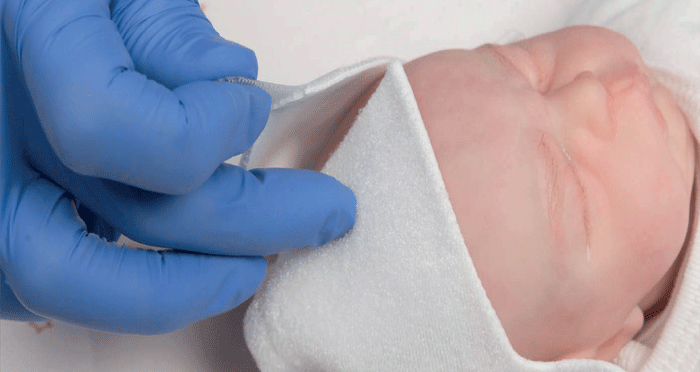
- The grey fixation lines are soft and do not pull into the babies’ faces as much as with previous types.
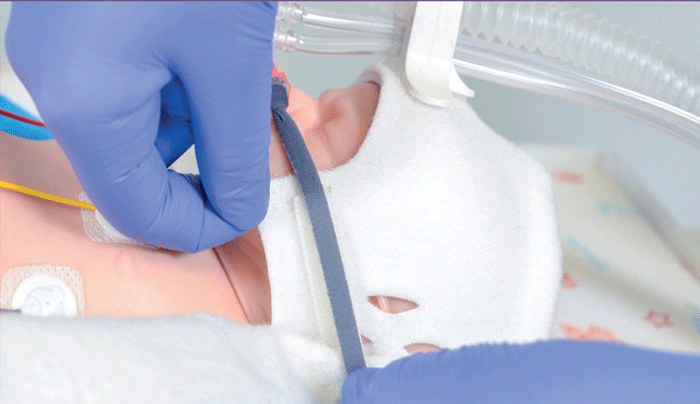
- The soft feel of the bonnet is brilliant and does not irritate the baby’s skin.
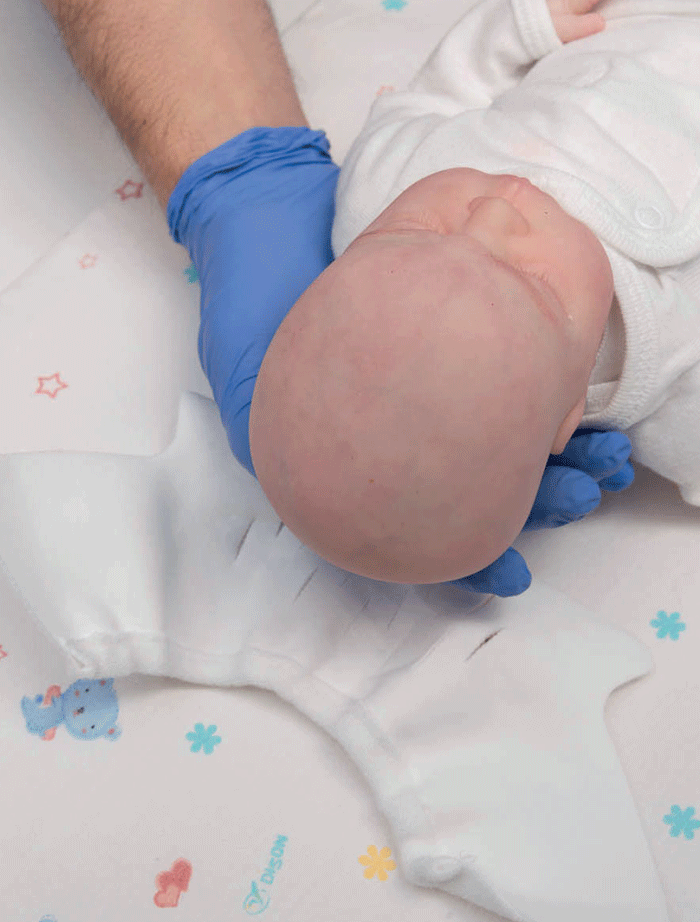
Do you feel that the NeoFlow bonnet helps improve patient comfort and outcomes?
Sr Mangan:
Yes. The new bonnets are easy to use and more comfortable for the babies. They are soft in material but also easy to wear. Babies’ heads are exposed to the air which is helpful for the above reason, but allows them to regulate their own temperature as our babies lose a lot of their heat from their head so they can grow and learn to keep warm without a constant ‘hat’.
Sr Oakes:
Yes the new bonnets are really soft as are the fastenings; we appear to get a better seal on the prongs and masks when using the new bonnets meaning babies get the constant pressure they require and therefore don’t require more invasive ventilation. The cradle support keeps everything in place and does not move around on the baby’s face and therefore does not irritate them.
How does the NeoFlow bonnet reduce waste?
Sr Mangan:
The bonnet adjusts in size so when babies grow and remain on nCPAP this can be adjusted without getting a new one. Additionally, previously we would measure babies’ heads and if this was wrong we would trial different hat sizes until we found one that fit. These hats could not be reused so would be wasted. Therefore, with the new bonnets we can measure the baby’s head and fit whatever suits with one bonnet.
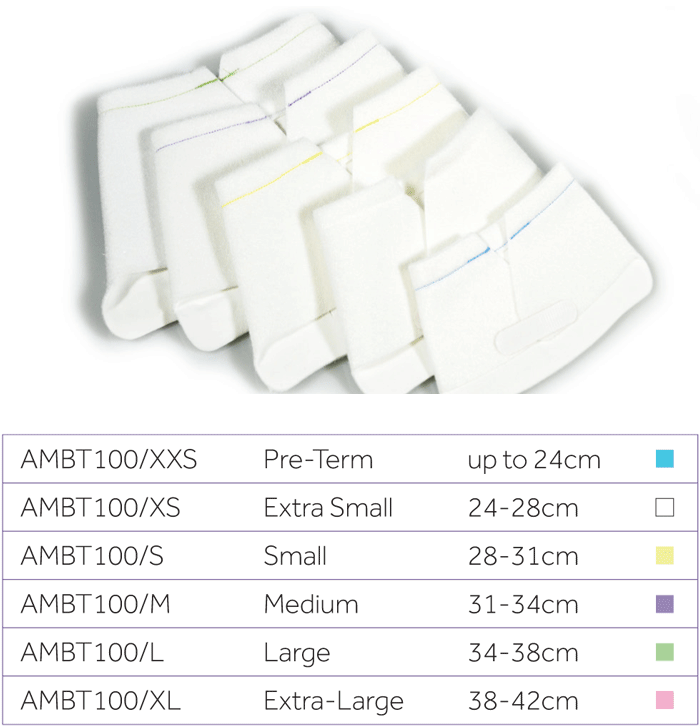
Sr Oakes:
As the babies grow the bonnets can be adjusted in size without having to get a new bonnet from the store whereas with the traditional hat we had to change these regularly as the baby grew. Also, they always lost their stretch after a few days whereas with the new bonnets, this does not happen. All the components needed come in the pack and the various size prongs can be used and changed as appropriate for each patient.
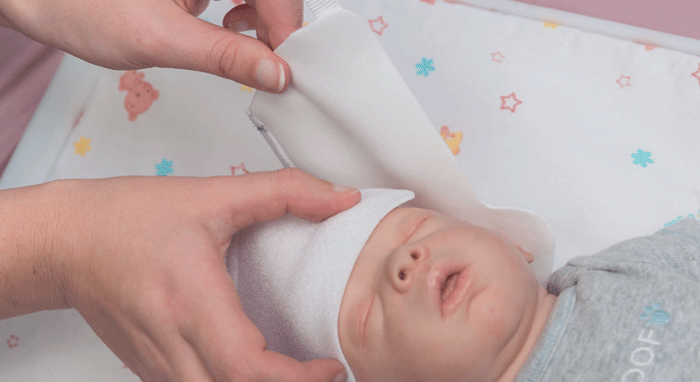
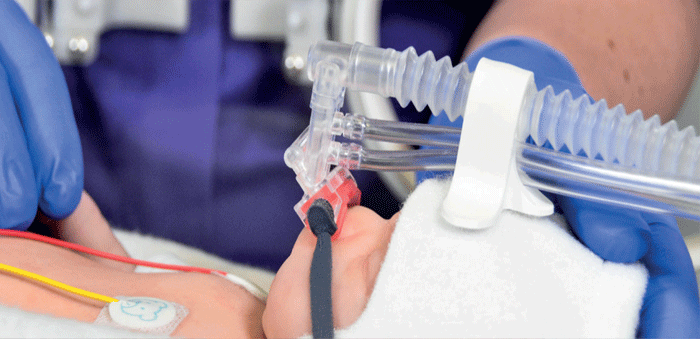
What advice would you give anyone wanting to implement the NeoFlow bonnet in their Neonatal unit?
Sr Mangan:
I would ask that they give it a try. Not only from a medical side of things, in regard to an easy transition when stepping down patients but also that the babies appear comfier with the improved bonnets and well sized masks/prongs.
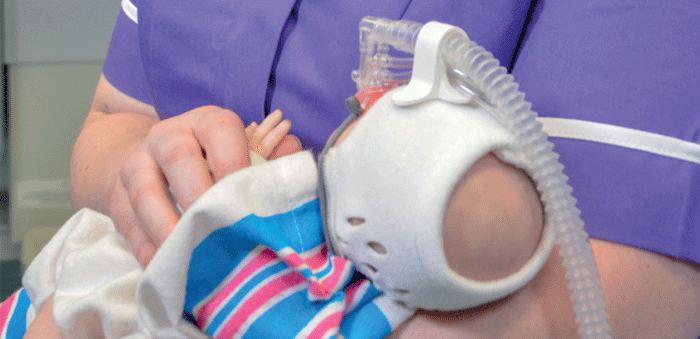
Sr Oakes:
I would recommend that they tried it as we have seen a great benefit since using them. I would advise them to get the support from the educators as they have been a great benefit in the implementation of the bonnets. I would let them know how much easier it is nursing a baby with these bonnets and how much more comfortable the patients appear with them on.
Or read this article in our
Tablet/iPad edition


